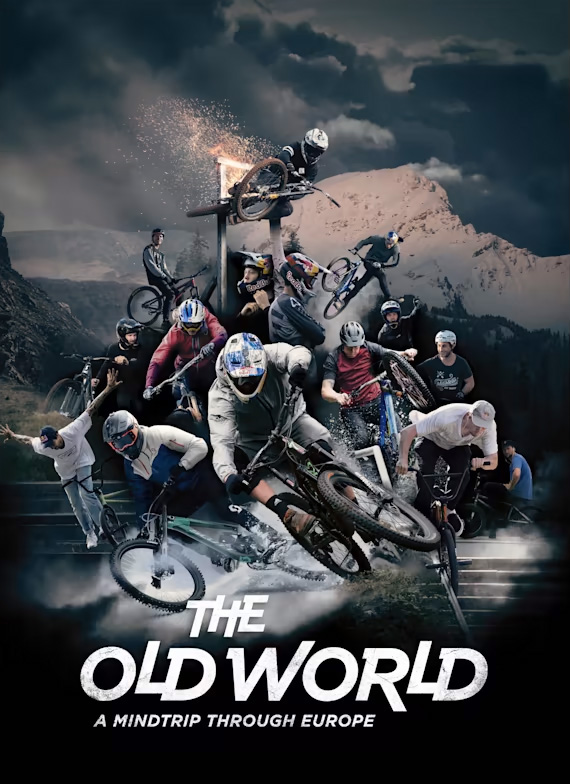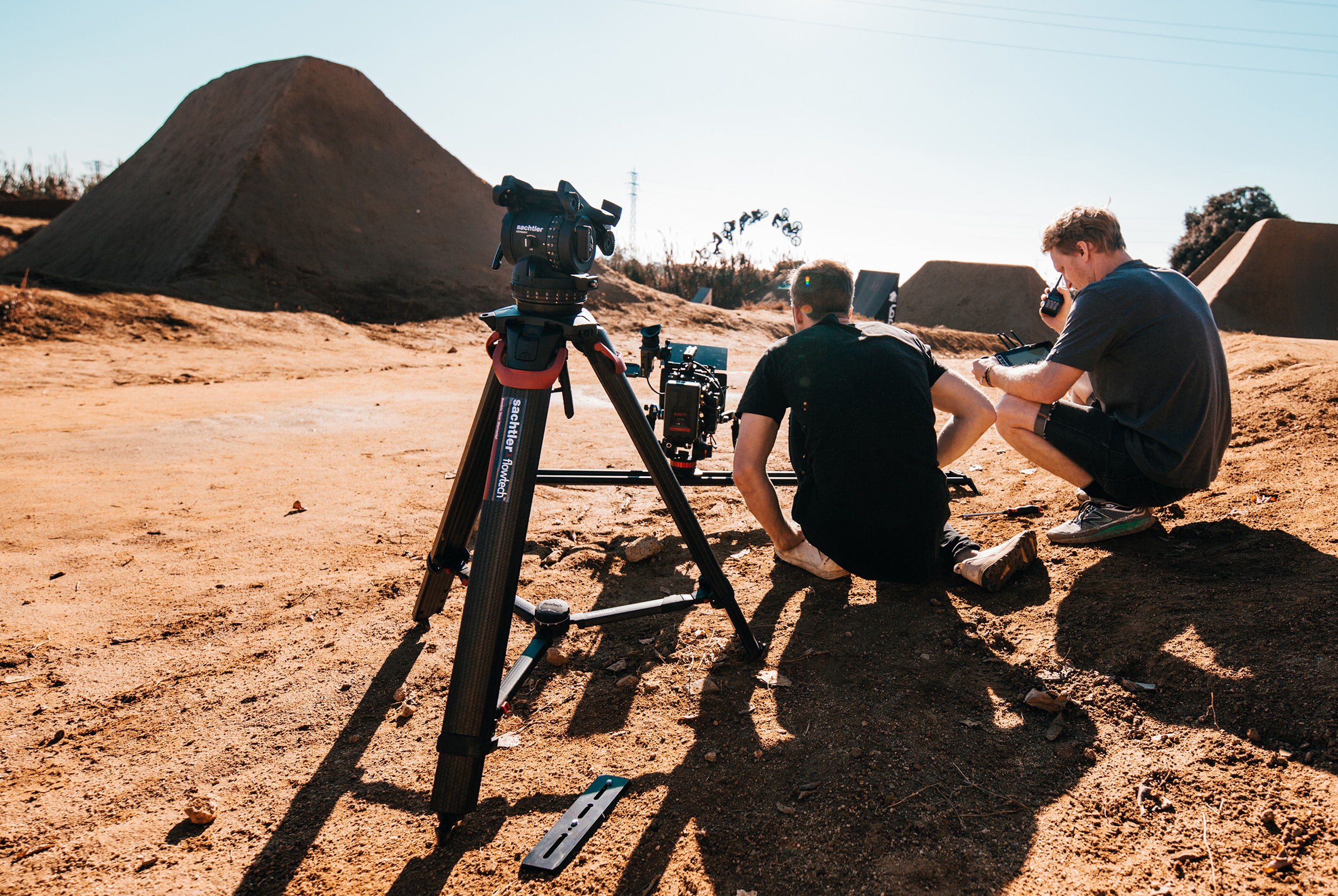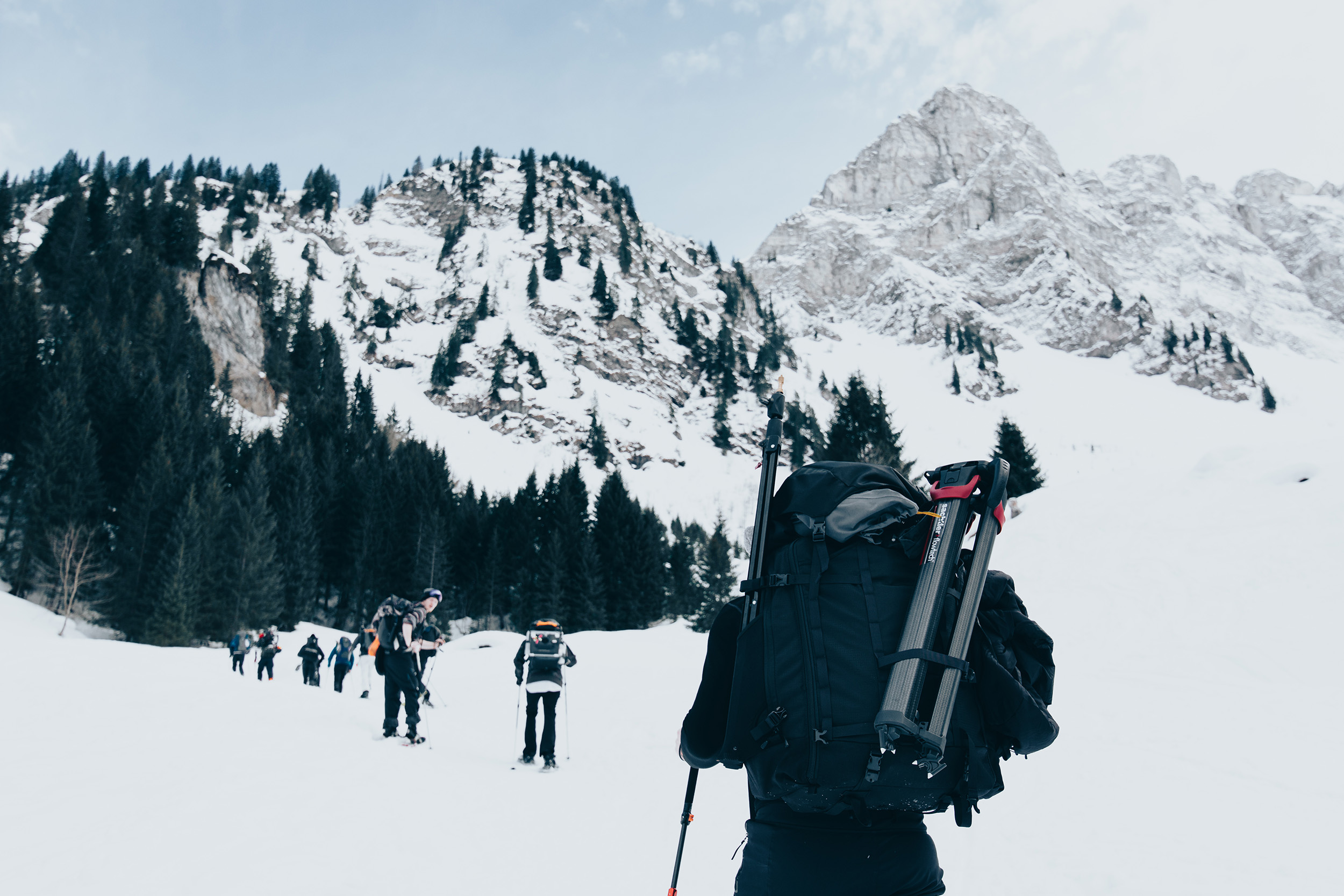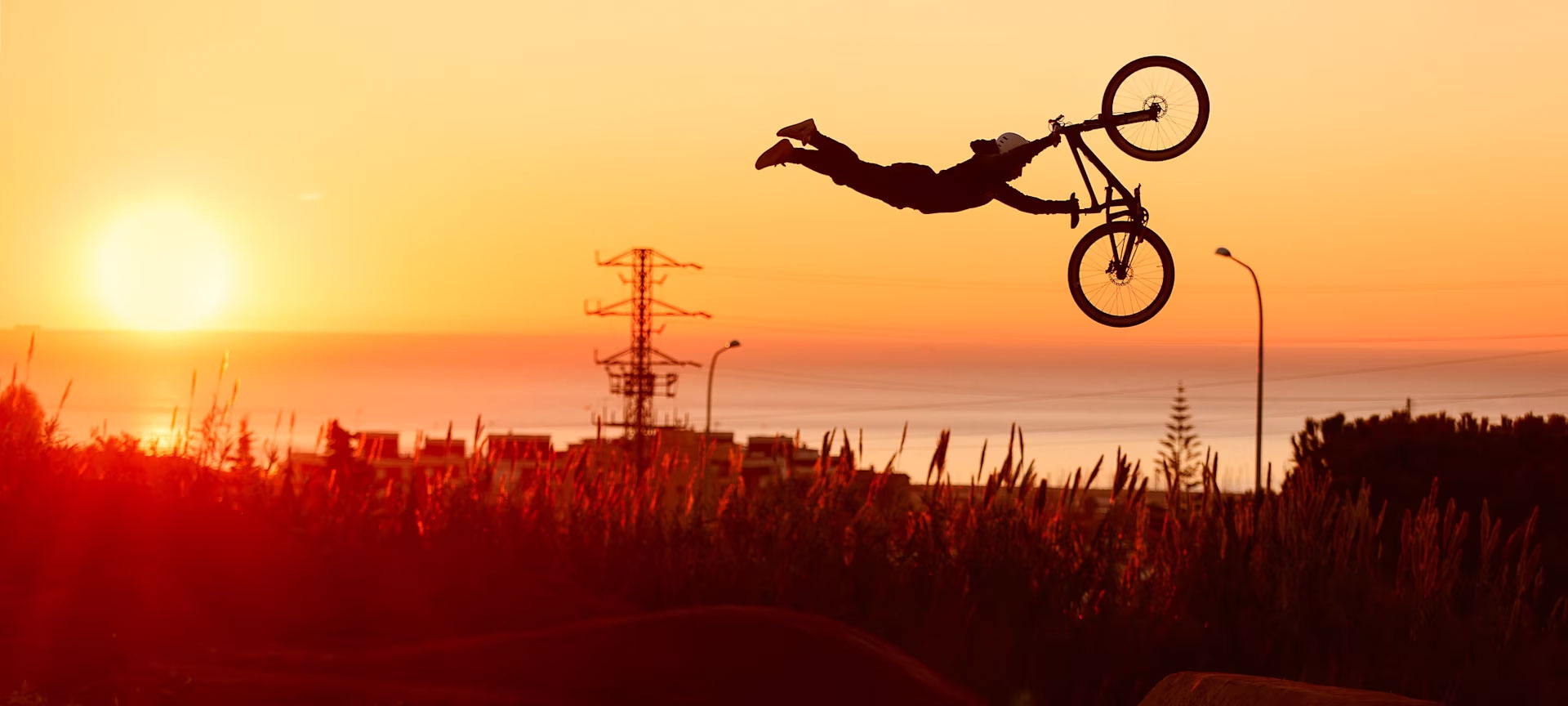Shifting Gears
“The Old World” is not your typical mountain biking movie. It’s a full-length blockbuster that takes viewers on a whirlwind tour of Europe, introducing them to some of the continent’s best BMX and mountain bike athletes. The goal, to tell stories from seven different countries, each offering a unique discipline and mindset, while also weaving in the tale of a young photographer who becomes entranced by these captivating biking visions.
The beauty of “The Old World” lies in the diversity of its riders and locations. Athletes featured in the film, such as Dawid and Szymon Godziek, Vincent Tupin, Matthias Dandois, Nico Vink, Martin Söderström, and many more, showcase their talents in stunning locations like La Poma Bike Park in Spain, Châtel in France, Strada in Norway, a secret location in Poland, Berlin, Paris, and Scotland.

As one of the driving forces behind “The Old World,” director of photography, Toni Tillmann worked with a talented crew to create a cinematic masterpiece that showcased the diversity of Europe’s riding culture and breathtaking landscapes. Four years in the making, the project was a labour of love that pushed the boundaries of action sports cinematography. Alongside his brothers, director and producer Andi and art director Michi, the Tillmanns embarked on a journey that would test their skills, determination, and gear.
All the Gear – Big Idea
Technical aspects in extreme sports filmmaking can range from simplistic to highly intricate. According to Toni, creating “The Old World” was a remarkable journey that demanded meticulous planning. “While it’s true that today’s technology allows for impressive filmmaking using devices as simple as an iPhone, the intricacies of our project required a different approach,” he says. Shooting in rough terrains and over an extended period meant careful equipment planning.
They divided the movie into chapters, each with a distinct visual language and style. The side story of a young photographer getting absorbed into these visions connects the various segments. For each chapter, they chose distinct camera and lighting configurations to establish a one-of-a-kind ambiance, shaped by the riders themselves. Planning considered the environment, individual rider styles, and cultural elements of each location, ranging from controlled camera movements in Spain to a raw aesthetic in Poland.

Toni, Michi and Andi Tillmann embark on their mind-trip through Europe.

To enhance the unique visual feel of each chapter, a multitude of camera types came in to play. “Our main camera was typically an Alexa Mini,” says Toni. “We also had a RED Gemini, RED Monstro, Sony FS55, Super8 cameras, VHS, DJI drones, race drones with Go Pros, helmet cam Go Pros and a Phantom high-speed camera in our cable CAM system. It was a big topic for the postproduction because the whole timeline was a mix of 30 different formats.” For camera supports, Sachtler’s flowtech tripod system was a must.
To hit their cinematic aspirations, the filmmakers needed a cine equipment setup, including gear from Red Bull Media House besides their own equipment. The setup typically featured a primary camera in a gimbal, a long-lens secondary camera mounted on a Sachtler flowtech tripod, drones, cable-cams, and other specialised equipment. “We’re not just running around with two small handheld cameras to see what we get,” says Toni. “We plan everything as much as possible to make it look like an epic feature film while accounting for variables like weather and terrain.”
Mobility meets Stability
Sachtler tripods and heads played a pivotal role in the production. According to Toni, their choice of tripod system depended on the visual language and camera concept for each segment. In Norway, where they used a 1000mm zoom lens, they needed a robust tripod. In locations like England, where they had to hike for hours each day, mobility was crucial, prompting them to use the flowtech100 tripod and Cine 7+7 HD fluid head.

The flowtech tripod’s versatility and quick deployment legs, combined with the 7+7 head’s independent, vertical, and horizontal drag, were essential in various challenging scenarios. For example, in Norway, they could overcome the challenging swamp-like terrain by extending one leg in to a mudhole and the others low on the ground beside the hole. The flowtech tripod’s ability to go extremely low proved invaluable.
Panning for Gold
Smooth panning shots are crucial for mountain bike filming. To ensure this, the counterbalance and drag features of Sachtler’s 7+7 head played a significant role. Whether capturing extreme shots with long lenses or shots of riders attempting daring tricks, the head’s adjustable drag for each axis provided the control needed for the perfect shot.
“For the long ridge line shots we had in Norway, I cranked up the drag on the tilt, so there's not a lot of up and down movement causing the shot to look unstable. And then I select two or three clicks with the pan to give it a nice smooth feeling.”
Toni TillmannDirector of Photography

The most extreme examples were long lens shots, where precise control over the camera movement was vital, especially in situations where riders attempted risky tricks. “This is where your adrenaline goes up as a cinematographer, because if you don’t get it, everyone’s going to be annoyed and you’re annoyed the most because you didn’t get the shot,” explains Toni. “So, you really don’t want to think twice about the gear. You need to be 100% confident that nothing will go wrong with your gear midway through a shot. With Sachtler we have that confidence.”
Blazing Trails – Breaking Boundaries
Throughout the production of “The Old World,” Toni and the crew faced many challenges. He recalls a demanding shot in Poland. This shot required technical precision, as they framed a rider performing a high-speed jump and landing in slow motion. It was a shot that stood out for its complexity and execution.
“We had a track built so that the riders would come in 90 degrees right side of the camera, jump into frame, then take off, go through the air for two or three seconds and land outside of the shot with the camera facing right into the sun shooting the whole thing at 240 frames per second, I was zooming in quite a lot, so the rider was constantly in close-up.”
But for Toni, the entire filmmaking process was an accomplishment. He found satisfaction not only in successfully executing shots but also in experimenting with new techniques, such as capturing riders literally blazing through the forest at night – on fire. “That was totally a first timer for me,” says Toni. “My heart was racing when we set the guys alight. I knew I only had one or two tries before we would run out of clothes! It’s a special chapter of the film, something that’s never been done before.”

Don’t try this at home! Nico Vink blazes a trail through Poland.
Passion and Imagination
For Toni, having riding experience in filming extreme sports is crucial. Predicting the riders’ movements and understanding the sport’s dynamics was crucial for framing shots effectively. Knowing the tricks, terrain, and riders’ capabilities allowed the crew to anticipate the action and capture it precisely.
“When you’re shooting jumps or downhill, it’s all about anticipation,” says Toni. “I know exactly where he’s going to end up at the highest point so I can get the framing right. Just from my years of experience of watching and riding myself, I know what kind of trick he is going to do, so I can predict where he’s going to go and which angle to pick to make it look best.”

Shooting mountain biking segments, the crew often found themselves in situations where every take had to count. Riders attempted tricks that could go wrong at any moment, and they needed to be ready to adapt on the spot. Their experience and knowledge of the sport allowed them to capture the action seamlessly.
In Hot and Cold Pursuit
The Old World took the crew to locations with extreme weather. From freezing Switzerland to scorching hot Barcelona. “We shot one segment with Vincent Tupin riding in the snow on the Swiss-French border that was minus 15 Celsius,” says Toni. “The hottest shoot was in Barcelona, where it was plus 30 degrees, so we had 50 degrees of temperature delta during the shoot.” The rugged and durable flowtech tripod performed flawlessly.
“None of the mechanics failed. Everything just did what it was supposed to do.”


Even with a 50 degree temperature delta between locations, flowtech was flawless.
Pedalling to Perfection
Since its release, the film has won praise from diverse audiences. Not just hardcore mountain bike enthusiasts even those less familiar with the sport appreciated the film’s unique approach. The film’s success is obvious with three Sports Emmy nominations for Best Editing, Best Sound Design and Best Camerawork, with the brother’s taking home the Emmy for outstanding camerawork.
The film’s live premiere on Red Bull TV was an enormous success. The film’s distinct style and combination of action, culture, and artistry have resonated with audiences, resulting in the highest viewing figures ever for a premier on the platform.
For action sports filmmakers, The Old World is an inspiration and a testament to the power of determination, innovation, and reliable equipment. It’s a reminder that extraordinary feats are possible when creativity and collaboration come together.

All images © Julian Mittelstädt @julian.mittelstaedt




